Organic Devices and Systems (ODS)
In the ODS Group physicist, material scientists and engineers are working jointly on the development of novel electronic device concepts for high performance, flexible, bio-compatible, and even biodegradable electronics of the future. Based on fundamental investigations on the principles of charge carrier transport in organic semiconductors we develop and optimize novel device concepts such as vertical transistors and integrate them into functional circuits e.g. for wireless communication application. Moreover, we also explore new device paradigms and develop neural networks for artificial intelligence based on organic electrochemical transistors. Recently we also developed the new field of 'Leaftronics' that has made sustainable, decomposable circuit boards, batteries, thin-film devices etc. feasible.
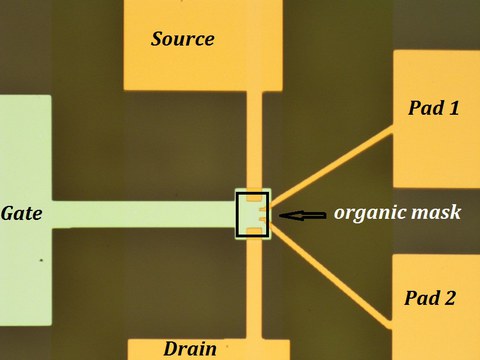
A thin-film transistor structure for gated four-point measurements.
Fundamentals of Transport in Organic Semiconductors: In Silicon technology controlled electrical doping and the manipulation of energy levels are well-established and essential for a rational design of electronic devices. In order to adopt these techniques to organic semiconductors we pioneered the concept of molecular doping and band gap engineering and investigate basic physics behind these effects. Our current focus lies on the band gap engineering and how this effect can be employed for more energy-efficient optoelectronic devices.
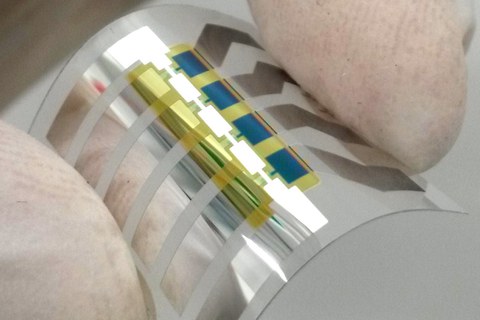
vertical organic triodes on flexible PEN substrate.
Vertical Organic Transistors: Traditional, horizontal organic thin-film transistors suffer from the poor charge carrier transport in organic semiconductors. Due to this fact such transistors perform poorly for when it comes to demanding electronic applications such as display driving or wireless communication.
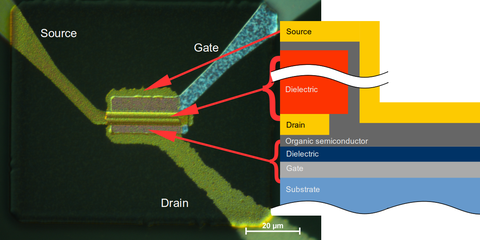
integrated vertical organic thin-film transistor device in a configuration for high-frequency measurements.
In the ODS group we pioneered two novel, vertical organic thin-film transistors and triodes which due to their ultra-short vertical architecture are able to operate at frequencies in excess to 100 MHz. These devices clearly outperform other organic transistors and they can even compete with inorganic devices. This allows entirely new applications, for example single-devices with integrated logical functions.
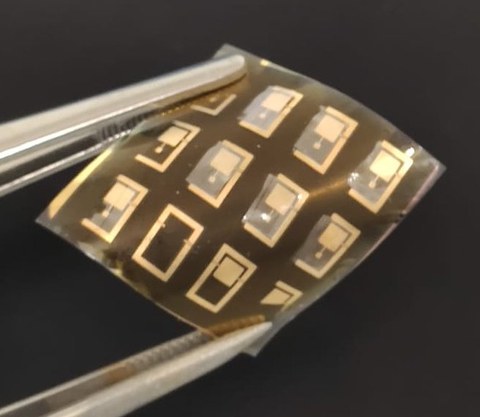
Flexible and biocompatible pressure sensors.
Biocompatible pressure sensors: Together with ERCD (UKD) we develop biocompatible pressure sensors for a direct measurement of the mid-ear pressure. Up to now this is only possible as an indirect measurement or attended with additional surgeries. They can be avoided by our new technique. The usage of an elastic polymer enables a capacitve pessure measurement in a range of +/- 70 mbar. Thereby we incorporate tiny coils in our devices which allow for a wireless communiaction using RFID technology.
Electrochemical Transistors for Neural Networks: Organic electrochemical transistors (OECTs), thanks to their biocompatibility and operation in an electrolytic environment, are envisioned to enable next-generation bioelectronics and ionoelectronics. They have been demonstrated as artificial synapses, biosensors, and drug-releasers. In our group, we go one step further. We grow dendritic networks of OECTs and use them for machine learning. The idea aims at developing implantable and biocompatible computational platforms that can monitor real-time body fluid composition and patterns of biosignals. The random composition of the fibers combined with the machine learning approach of reservoir computing enables artificial intelligence on-chip, a potential breakthrough in healthcare and medicine.
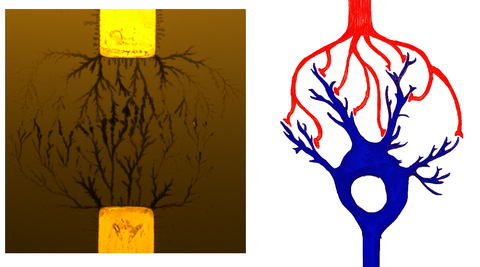
A network of organic semiconductor material grown via electropolymerisation. The network resembles the structure of a neurons as shown on the left.
Leaftronics: Leaftronics is an interdisciplinary field pioneered by the ODS group at TU Dresden, where decellularized leaves are transformed into sustainable, fully decomposable electronics. The natural quasi-fractal vein networks within leaves become lignocellulose scaffolds that, when functionalized with conductive inks or bio-derived polymers, result in transparent flexible electrodes or substrates respectively. This biomimetic breakthrough is being used to directly tackle the 60+ million tons of annual global e-waste and opens thrilling research frontiers: biodegradable PCBs, antimicrobial leaf membranes for water purification, lignocellulose-based CO2 capture systems, and transient batteries powered by natural electrolytes. Each direction invites rigorous experimentation in materials chemistry, nano/microfabrication, and sustainability science.
The field's impact is underscored by the prestigious Joachim Herz Prize 2025 (one of the most highly endowed science awards in Germany) awarded to the ODS group for pioneering this field. For students with a solid science foundation, Leaftronics offers the rare chance to blend biology, physics, and engineering to build tomorrow’s truly green electronics.
Rubrene crystals: We study the electronic transport properties of highly ordered organic semiconductors that can be integrated into functional devices. Our work includes the growth, doping and processing of thin-film crystals using techniques suited for industrial scale mass production. We are interested in the device physics in novel device concepts based on these ordered organic thin films.
We are constantly seeking for motivated students (Bachelor and Master), PhD Students and PostDocs to join our team. Please contact Hans Kleemann.
Topics for thesis project can be found here: thesis projects
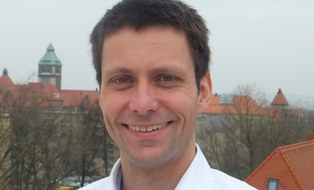 © Kai Schmidt/IAP
© Kai Schmidt/IAP
Dr. Hans Kleemann
ODS group (Organic Devices and Structures)
Send encrypted email via the SecureMail portal (for TUD external users only).
